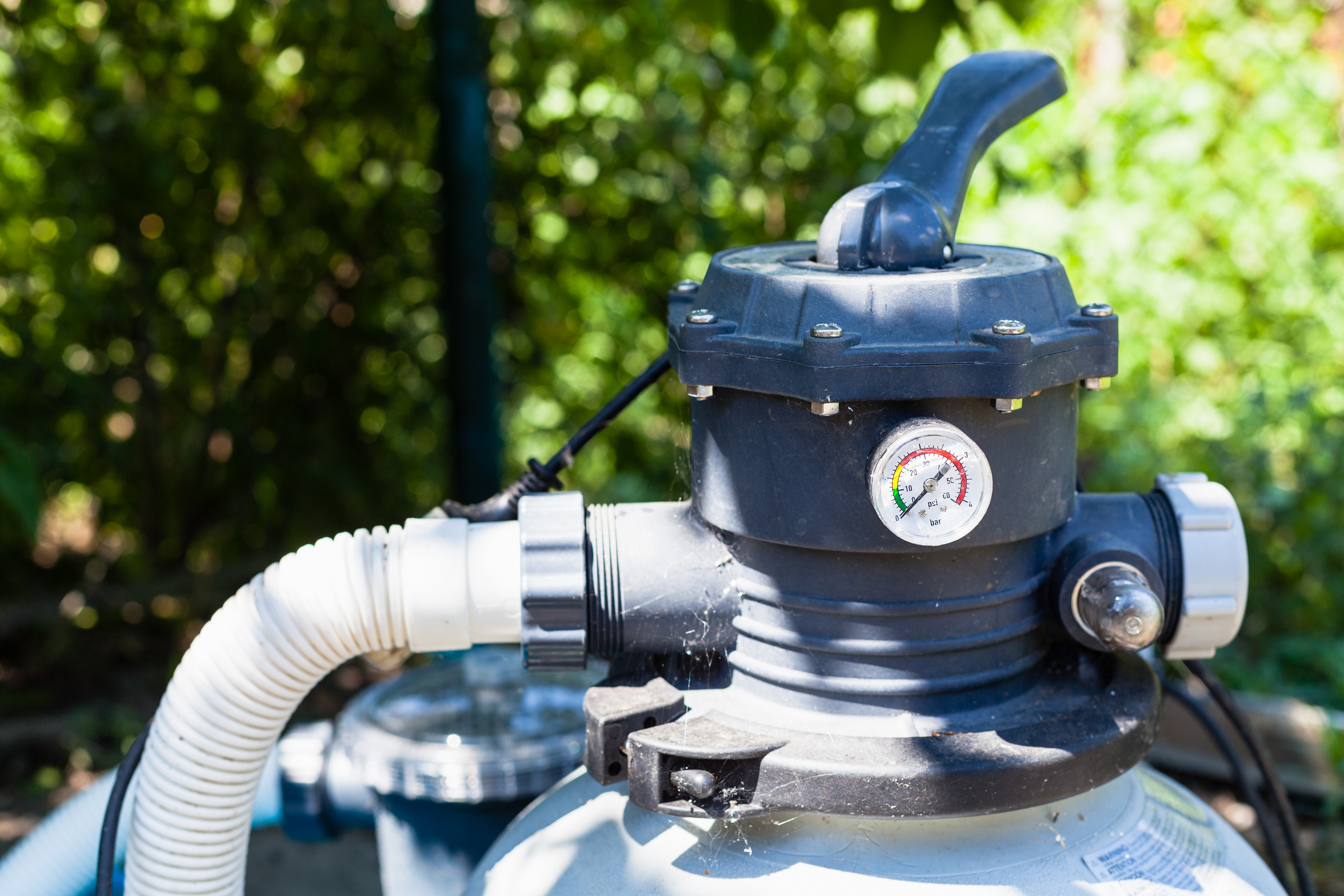How to Use Your Pool Pressure Gauge and Air Relief Valve

A properly functioning pool pressure gauge, filter, and air relief valve are vital to the performance of your pool’s circulation system. The filter keeps grime and debris from building up in your pool, and circulation plays an important role in the water's chemical balance. That said, it is important that you know how to read the filter’s pool pressure gauge, and use the air relief valve whenever necessary.
Pressure Gauge
The pressure gauge is normally round and found on the top of the filter tank. The round face is numbered clockwise from 0-60, and a needle is used to pinpoint the pressure reading in the pool’s filter. When you first install your filter, you should note the filter’s normal operating pressure. This reading will serve as your benchmark number for all future readings. If you did not do this, clean the filter and note the starting pressure instead. All pools are different, so there is no universal operating pressure pool filters. The filter is said to operate at normal pressure when the pump is drawing water through the filter and returning it to the main body of water at the correct rate.
Excessive Pressure
The filter pressure is said to be too high at a reading of 10 psi over normal pressure. If your pool pressure gauge is reading this level, it means your filter needs to be cleaned. High-pressure readings are usually caused by dirt filter media, or if the D.E. needs to be backwashed. Dirty filters slow the rate of the water’s return to the main body, causing pressure to build up in the tank. Cleaning usually relieves the pressure, but sometimes you will have to replace the filter media.
Insufficient Pressure
A pressure reading of 5 psi lower than the operating pressure is another cause for concern. A low-pressure reading means there is not as much or enough water passing through the tank. This indicates that something is inhibiting the water’s flow to the rest of the system. In this case, check that your system’s lids are secured and the water level in the pool is high enough to reach the skimmers, and look for some form of debris that is blocking the water from entering the filter. Cracks or leaks in the pipes are another common cause.
Air Relief Valve
When the pump has been turned off, or has lost prime, air can build up inside the tank. If your filter tank is filled with air, it can cause a build-up of pressure when the system is turned on and water begins to flow into the tank. This excessive pressure can cause the pump lid or filter top to blow out and potentially damage the pool’s equipment. Air in the tank also competes with water passing through it, which can affect the ability of the water to flow through the entire filtration system, compromising the filter’s efficiency. To relieve air pressure in the tank, simply open the air relief valve upon turning on the system.






 Pools
Pools Spas
Spas Liners
Liners Equipment
Equipment Covers
Covers Accessories
Accessories Cleaning
Cleaning  Pool Fun
Pool Fun  Clearance
Clearance
